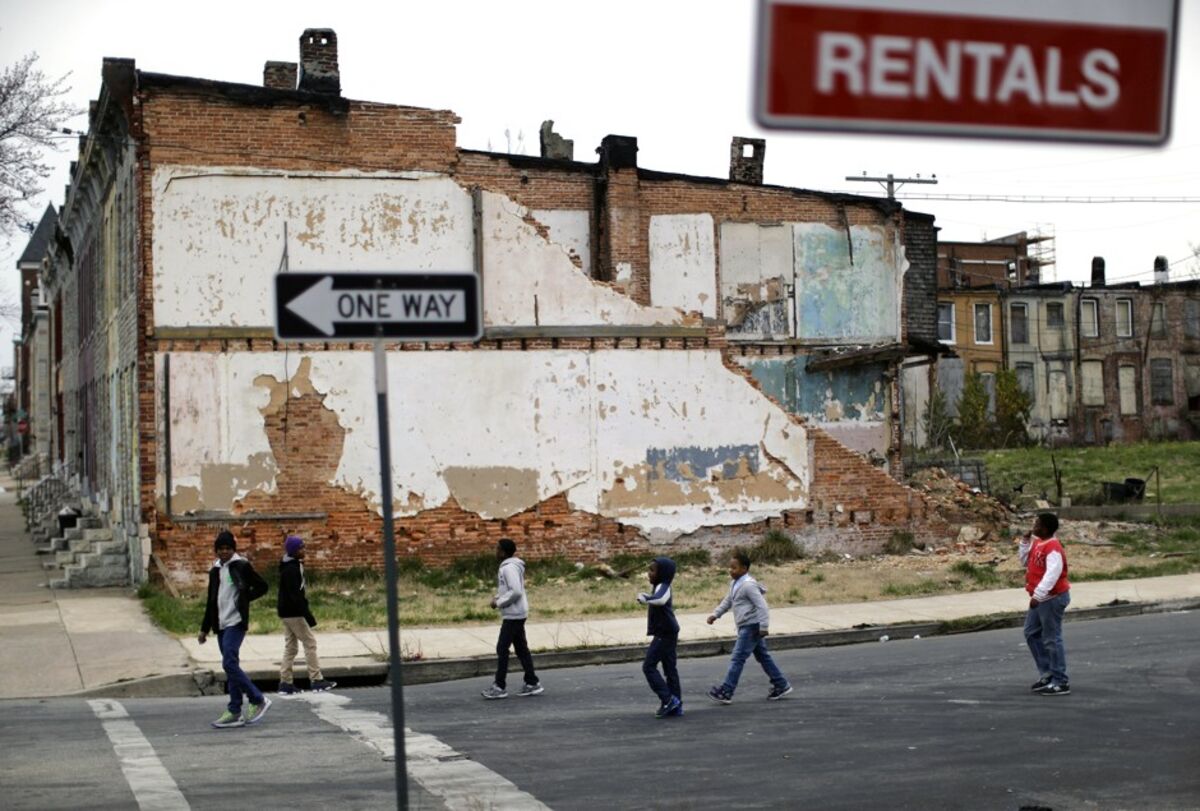- Mar 11, 2015
- 76,927
- 33,975
- 2,330
On October 24, 2013, the Kellogg Foundation sent out a press release about a report they had done entitled, “The Business Case for Racial Equity”. This was a study done by the Kellogg Foundation, using information it had studied and assessed from the Center for American Progress, National Urban League Policy Institute, Joint Center for Political and Economic Studies and the U.S. Department of Justice.
“Striving for racial equity – a world where race is no longer a factor in the distribution of opportunity – is a matter of social justice. But moving toward racial equity can generate significant economic returns as well. When people face barriers to achieving their full potential, the loss of talent, creativity, energy, and productivity is a burden not only for those disadvantaged, but for communities, businesses, governments, and the economy as a whole. Initial research on the magnitude of this burden in the United States (U.S.), as highlighted in this brief, reveals impacts in the trillions of dollars in lost earnings, avoidable public expenditures, and lost economic output.”
The Kellogg Foundation and Altarum Institute
“The Business Case for Racial Equity” Production of this brief was funded by the W. K. Kellogg Foundation. Lead author: Ani Turner, Altarum Institute. Contributors: Dolores Acevedo-Garcia, Brandeis University; Darrell Gaskin, Johns Hopkins University; Thomas LaVeist, John Hopkins University; David R. Williams, Harvard University; Laura Segal, Trust for America’s Health; and George Miller, Altarum Institute.
In 2011, DEMOS did a study named “The Racial Wealth Gap, Why Policy Matters”, which discussed the racial wealth gap, the problems associated with it along with solutions and outcomes if the gap did not exist. In this study DEMOS determined that the racial wealth gap was primarily driven by policy decisions.
“The U.S. racial wealth gap is substantial and is driven by public policy decisions. According to our analysis of the SIPP data, in 2011 the median white household had $111,146 in wealth holdings, compared to just $7,113 for the median Black household and $8,348 for the median Latino household. From the continuing impact of redlining on American homeownership to the retreat from desegregation in public education, public policy has shaped these disparities, leaving them impossible to overcome without racially-aware policy change.”
The Racial Wealth Gap, Why Policy Matters, Laura Sullivan, Tatjana Meschede, Lars Dietrich, & Thomas Shapiro institute for assets & social policy, brandeis university, Amy Traub, Catherine Ruetschlin & Tamara Draut demos
“Racial inequality in the United States today may, ultimately, be based on slavery, but it is also based on the failure of the country to take effective steps since slavery to undermine the structural racial inequality that slavery put in place. From the latter part of the nineteenth century through the first half of the twentieth century, the Jim Crow system continued to keep Blacks “in their place,” and even during and after the civil rights era no policies were adopted to dismantle the racial hierarchy that already existed.”
HOUSING DISCRIMINATION AS A BASIS FOR BLACK REPARATIONS, Jonathan Kaplan and Andrew Valls, Public Affairs Quarterly Volume 21, Number 3, July 2007
“It will end up costing the U.S. economy as much as $1 trillion between now and 2028 for the nation to maintain its longstanding black-white racial wealth gap, according to a report released this month from the global consultancy firm McKinsey & Company. That will be roughly 4 percent of the United States GDP in 2028—just the conservative view, assuming that the wealth growth rates of African Americans will outpace white wealth growth at its current clip of 3 percent to .8 percent annually, said McKinsey. If the gap widens, however, with white wealth growing at a faster rate than black wealth instead, it could end up costing the U.S. $1.5 trillion or 6 percent of GDP according to the firm.”

 www.citylab.com
www.citylab.com
Why this is just a bunch of liberal jibberish to to black in order to keep them voting democrat. Those aren't the problems, what we conservatives tell you is the real problem. Why if you just had a father in the home none of this would happen.
Black Workers Still Earn Less than Their White Counterparts
As employers in the U.S. tackle issues around racism, fresh attention is being given to the racial wage gap and why black men and women, in particular, still earn substantially less than their white counterparts. Nearly 56 years after the passage of the Civil Rights Act, "we find equal pay for equal work is still not a reality," noted Jackson Gruver, a data analyst at compensation data and software firm PayScale.
Last year, PayScale analyzed differences in earnings between white men and men of color using data from a sample of 1.8 million employees surveyed between January 2017 and February 2019.
Among the findings, Gruver reported: "Even as black or African-American men climb the corporate ladder, they still make less than equally qualified white men. They are the only racial/ethnic group that does not achieve pay parity with white men at some level."
The study found that black men had the largest "uncontrolled pay gap" relative to white men, when comparing the average earnings of black men and white men in the U.S.
On average, black men earned 87 cents for every dollar a white man earned. Hispanic workers had the next largest gap, earning 91 cents for every dollar earned by white men.
To put that in perspective, the median salary of a white man in our sample is $72,900; the controlled median pay for black or African-American men is thus $71,500," Gruver said. "This suggests a $1,400 difference in pay that is likely attributable to race."
So daddy lives at home and the family still makes less than whites. Because:
NWLC calculations, based on the U.S. Census Bureau's Current Population Survey for 2016, revealed that when comparing all men and women who work full time, year-round in the U.S., women were paid just 80 cents for every dollar paid to their male counterparts. But the wage gap was even larger when looking specifically at black women who work full time, year-round—they were paid only 63 cents for every dollar paid to white, non-Hispanic men.
 www.shrm.org
www.shrm.org
So a white working couple will make 90 cents on every dollar while a black working couple makes 75 cents. To allow you to understand this reality a white female worker makes 80 cents on every dollar a white man makes. White females are demanding equal pay and rightfully so.
And you black folk really need to start taking education seriously.
Black unemployment is significantly higher than white unemployment regardless of educational attainment
The black unemployment rate is nearly or more than twice the white unemployment rate regardless of educational attainment. It is, and always has been, about twice the white unemployment rate; however, the depth of this racial inequality in the labor market rarely makes the headlines.
Over the last 12 months, the average unemployment rate for black college graduates has been 4.1 percent—nearly two times the average unemployment rate for white college graduates (2.4 percent) and equivalent to the unemployment rate of whites with an associate’s degree or who have not completed college (4.0 percent). [/B]The largest disparity is seen among those with less than a high school diploma: while whites with less than a high school diploma have an unemployment rate of 6.9 percent, the black unemployment rate is 16.6 percent—over two times the white average.
The broader significance of this disparity suggests a race penalty whereby blacks at each level of education have unemployment rates that are the same as or higher than less educated whites.[/b]

 www.epi.org
www.epi.org
African Americans are paid less than whites at every education level]
While the economy continues to improve and wages are finally beginning to inch up for most Americans, African Americans are still being paid less than whites at every education level. [/b]As you can see from the chart below, while a college education results in higher wages—both for whites and blacks—it does not eliminate the black-white wage gap. African Americans are still earning less than whites at every level of educational attainment. A recent EPI report, Black-white wage gaps expand with rising wage inequality, shows that this gap persists even after controlling for years of experience, region of the country, and whether one lives in an urban or rural area. In fact, since 1979, the gaps between black and white workers have grown the most among workers with a bachelor’s degree or higher—the most educated workers.
African Americans are paid less than whites at every education level
]Yep, all this stuff is made up by liberals to keep blacks voting for democrats. On top of that, these things only happen in democrat cities. Yessir!
“Striving for racial equity – a world where race is no longer a factor in the distribution of opportunity – is a matter of social justice. But moving toward racial equity can generate significant economic returns as well. When people face barriers to achieving their full potential, the loss of talent, creativity, energy, and productivity is a burden not only for those disadvantaged, but for communities, businesses, governments, and the economy as a whole. Initial research on the magnitude of this burden in the United States (U.S.), as highlighted in this brief, reveals impacts in the trillions of dollars in lost earnings, avoidable public expenditures, and lost economic output.”
The Kellogg Foundation and Altarum Institute
“The Business Case for Racial Equity” Production of this brief was funded by the W. K. Kellogg Foundation. Lead author: Ani Turner, Altarum Institute. Contributors: Dolores Acevedo-Garcia, Brandeis University; Darrell Gaskin, Johns Hopkins University; Thomas LaVeist, John Hopkins University; David R. Williams, Harvard University; Laura Segal, Trust for America’s Health; and George Miller, Altarum Institute.
In 2011, DEMOS did a study named “The Racial Wealth Gap, Why Policy Matters”, which discussed the racial wealth gap, the problems associated with it along with solutions and outcomes if the gap did not exist. In this study DEMOS determined that the racial wealth gap was primarily driven by policy decisions.
“The U.S. racial wealth gap is substantial and is driven by public policy decisions. According to our analysis of the SIPP data, in 2011 the median white household had $111,146 in wealth holdings, compared to just $7,113 for the median Black household and $8,348 for the median Latino household. From the continuing impact of redlining on American homeownership to the retreat from desegregation in public education, public policy has shaped these disparities, leaving them impossible to overcome without racially-aware policy change.”
The Racial Wealth Gap, Why Policy Matters, Laura Sullivan, Tatjana Meschede, Lars Dietrich, & Thomas Shapiro institute for assets & social policy, brandeis university, Amy Traub, Catherine Ruetschlin & Tamara Draut demos
“Racial inequality in the United States today may, ultimately, be based on slavery, but it is also based on the failure of the country to take effective steps since slavery to undermine the structural racial inequality that slavery put in place. From the latter part of the nineteenth century through the first half of the twentieth century, the Jim Crow system continued to keep Blacks “in their place,” and even during and after the civil rights era no policies were adopted to dismantle the racial hierarchy that already existed.”
HOUSING DISCRIMINATION AS A BASIS FOR BLACK REPARATIONS, Jonathan Kaplan and Andrew Valls, Public Affairs Quarterly Volume 21, Number 3, July 2007
“It will end up costing the U.S. economy as much as $1 trillion between now and 2028 for the nation to maintain its longstanding black-white racial wealth gap, according to a report released this month from the global consultancy firm McKinsey & Company. That will be roughly 4 percent of the United States GDP in 2028—just the conservative view, assuming that the wealth growth rates of African Americans will outpace white wealth growth at its current clip of 3 percent to .8 percent annually, said McKinsey. If the gap widens, however, with white wealth growing at a faster rate than black wealth instead, it could end up costing the U.S. $1.5 trillion or 6 percent of GDP according to the firm.”

White Americans' Hold on Wealth Is Old, Deep, and Nearly Unshakeable
White families quickly recuperated financial losses after the Civil War, and then created a Jim Crow credit system to bring more white families into money.
Why this is just a bunch of liberal jibberish to to black in order to keep them voting democrat. Those aren't the problems, what we conservatives tell you is the real problem. Why if you just had a father in the home none of this would happen.
Black Workers Still Earn Less than Their White Counterparts
As employers in the U.S. tackle issues around racism, fresh attention is being given to the racial wage gap and why black men and women, in particular, still earn substantially less than their white counterparts. Nearly 56 years after the passage of the Civil Rights Act, "we find equal pay for equal work is still not a reality," noted Jackson Gruver, a data analyst at compensation data and software firm PayScale.
Last year, PayScale analyzed differences in earnings between white men and men of color using data from a sample of 1.8 million employees surveyed between January 2017 and February 2019.
Among the findings, Gruver reported: "Even as black or African-American men climb the corporate ladder, they still make less than equally qualified white men. They are the only racial/ethnic group that does not achieve pay parity with white men at some level."
The study found that black men had the largest "uncontrolled pay gap" relative to white men, when comparing the average earnings of black men and white men in the U.S.
On average, black men earned 87 cents for every dollar a white man earned. Hispanic workers had the next largest gap, earning 91 cents for every dollar earned by white men.
To put that in perspective, the median salary of a white man in our sample is $72,900; the controlled median pay for black or African-American men is thus $71,500," Gruver said. "This suggests a $1,400 difference in pay that is likely attributable to race."
So daddy lives at home and the family still makes less than whites. Because:
NWLC calculations, based on the U.S. Census Bureau's Current Population Survey for 2016, revealed that when comparing all men and women who work full time, year-round in the U.S., women were paid just 80 cents for every dollar paid to their male counterparts. But the wage gap was even larger when looking specifically at black women who work full time, year-round—they were paid only 63 cents for every dollar paid to white, non-Hispanic men.
Black Workers Still Earn Less than Their White Counterparts
As employers in the U.S. tackle issues around racism, fresh attention is being given to the racial wage gap. Employers can examine their pay policies to root out inequities.
So a white working couple will make 90 cents on every dollar while a black working couple makes 75 cents. To allow you to understand this reality a white female worker makes 80 cents on every dollar a white man makes. White females are demanding equal pay and rightfully so.
And you black folk really need to start taking education seriously.
Black unemployment is significantly higher than white unemployment regardless of educational attainment
The black unemployment rate is nearly or more than twice the white unemployment rate regardless of educational attainment. It is, and always has been, about twice the white unemployment rate; however, the depth of this racial inequality in the labor market rarely makes the headlines.
Over the last 12 months, the average unemployment rate for black college graduates has been 4.1 percent—nearly two times the average unemployment rate for white college graduates (2.4 percent) and equivalent to the unemployment rate of whites with an associate’s degree or who have not completed college (4.0 percent). [/B]The largest disparity is seen among those with less than a high school diploma: while whites with less than a high school diploma have an unemployment rate of 6.9 percent, the black unemployment rate is 16.6 percent—over two times the white average.
The broader significance of this disparity suggests a race penalty whereby blacks at each level of education have unemployment rates that are the same as or higher than less educated whites.[/b]

Black unemployment is significantly higher than white unemployment regardless of educational attainment
The black unemployment rate is nearly or more than twice the white unemployment rate regardless of educational attainment. It is, and always has been, about twice the white unemployment rate; however, the depth of this racial inequality in the labor market rarely makes the headlines.
African Americans are paid less than whites at every education level]
While the economy continues to improve and wages are finally beginning to inch up for most Americans, African Americans are still being paid less than whites at every education level. [/b]As you can see from the chart below, while a college education results in higher wages—both for whites and blacks—it does not eliminate the black-white wage gap. African Americans are still earning less than whites at every level of educational attainment. A recent EPI report, Black-white wage gaps expand with rising wage inequality, shows that this gap persists even after controlling for years of experience, region of the country, and whether one lives in an urban or rural area. In fact, since 1979, the gaps between black and white workers have grown the most among workers with a bachelor’s degree or higher—the most educated workers.
African Americans are paid less than whites at every education level
]Yep, all this stuff is made up by liberals to keep blacks voting for democrats. On top of that, these things only happen in democrat cities. Yessir!
Last edited:




